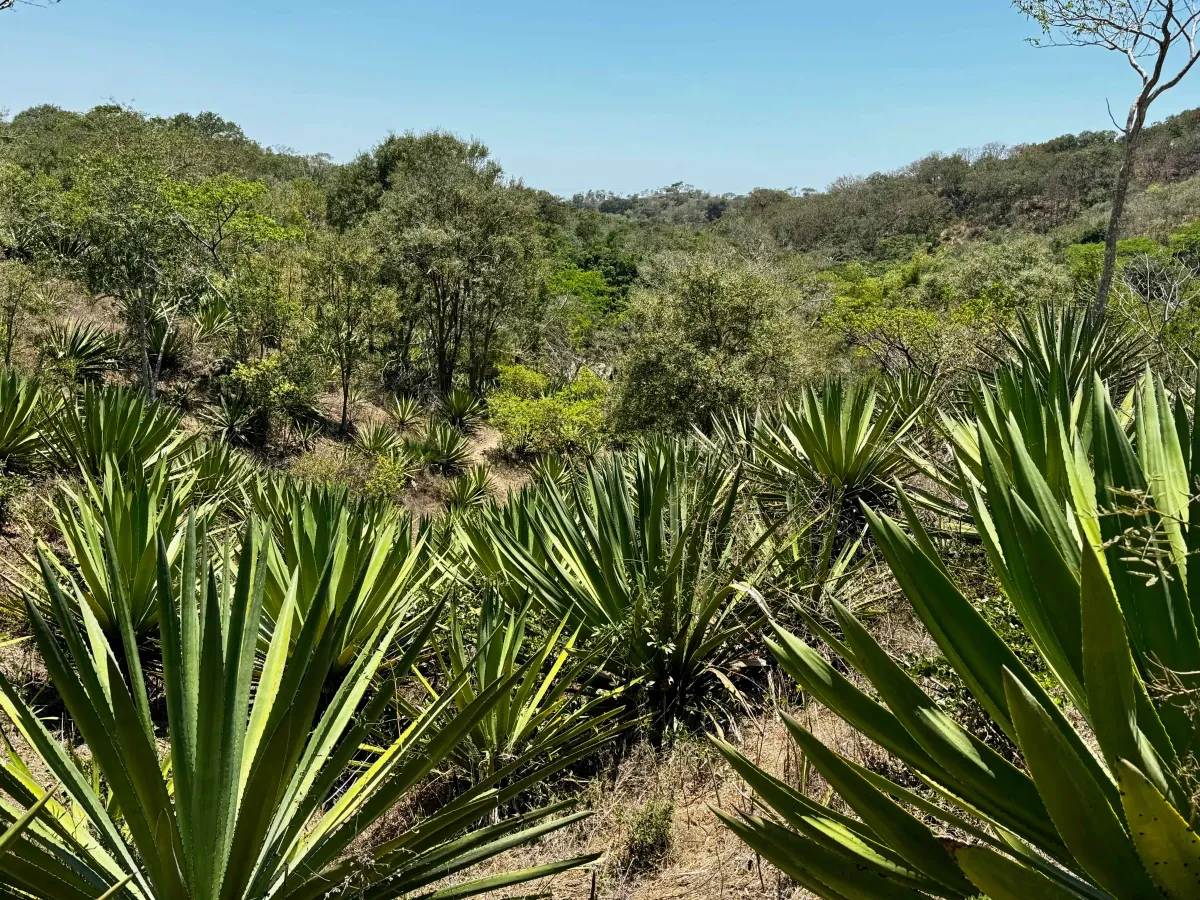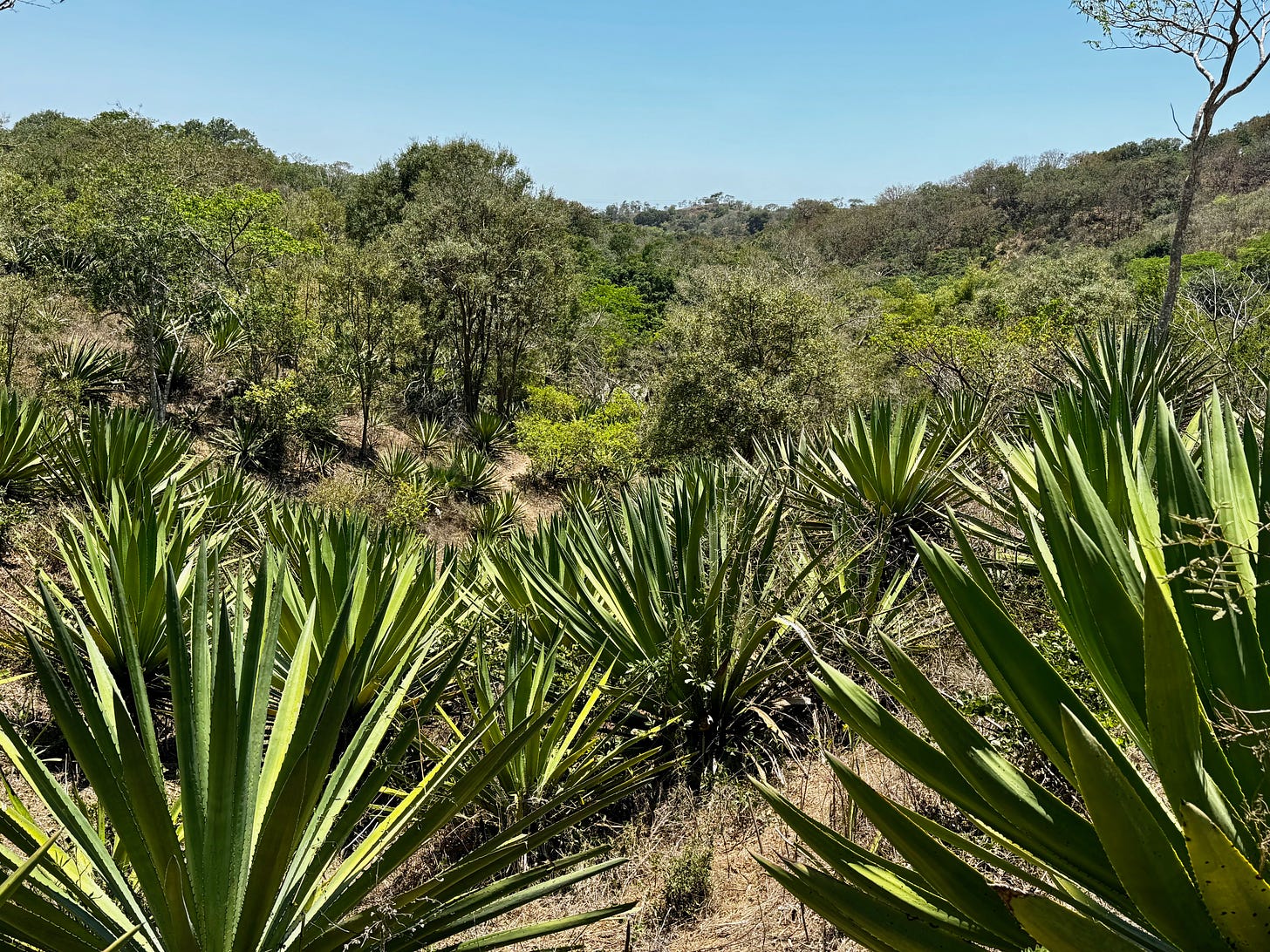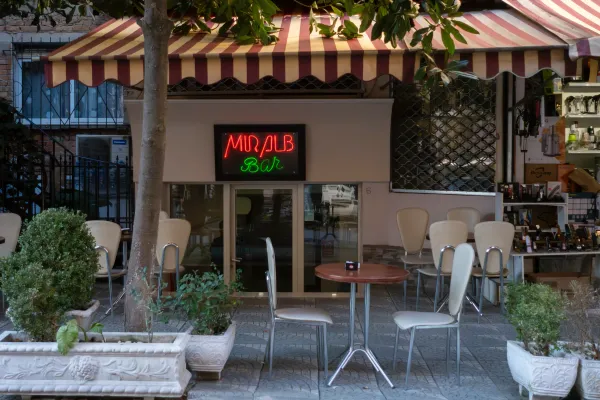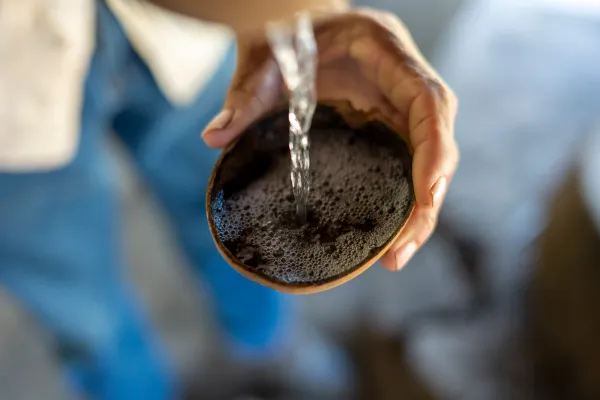Raicilleros, Philosopher Kings (Part 1)
What is raicilla? And unlearning everything you know about tequila and mezcal.

“People don’t understand raicilla in Vallarta. They might know it in the context of everyday use, but they don’t know it as a cultural element,” Arturo said as we weaved through the mountains of Cabo Corrientes in his truck. “For example, my mom, she loves raicilla, and two years ago I took her to see a taberna for the first time in her life.”
A couple of hours earlier, I met up with Arturo Dávila, a former architect who spent a few years as the head of Puerto Vallarta's Institute of Culture before venturing into the world of agave spirits. Recently, he and his partners started a series of projects designed to spread awareness of raicilla - a type of mezcal that’s local to the Mexican state of Jalisco. In that portfolio are Atarraya, a small batch label of raicilla; Benomade, an organization that organizes tastings and tours; and Chiro, a raicilla bar in the Versalles neighborhood in Puerto Vallarta.
It's worth noting that most of his projects are primarily designed for Mexicans, helping them appreciate raicilla’s place in their history, not gringo tourists like me. Despite tequila and mezcal being relatively widespread these days, plenty of misconceptions about agave distillates still exist - both in Mexico and abroad. There are hundreds of years of cultural richness and history embedded into agave distillates, so for Arturo, understanding raicilla will help people understand Mexico.
I contacted Arturo a few weeks before my trip to Jalisco to learn more about raicilla and all of his projects. He graciously agreed to take me up into the mountains of Cabo Corrientes to meet some of the makers, or raicilleros, he works with. It was a long car ride from Vallarta, so as we climbed up through the mountains, I had plenty of time to unlearn everything I knew about agave spirits.
It's safe to say that most tend to think of tequila and mezcal as being separate, monolithic entities. But the tequila you took shots of in a sticky frat house basement and the smoky mezcal your hipster cousin had you try are hardly representative of agave spirits.
Both tequila and mezcal have a Denominación de Origen (D.O.), a set of regulations that govern what can legally be sold as mezcal or tequila. But before mezcal was given a D.O., the term mezcal was used as the broader category for distilled agave [1]. As such, tequila was (and is) just a type of mezcal, albeit one made with a specific agave from a specific region.
One could argue that the D.O. was well-meaning and intended to protect a budding industry. But classifying mezcal was like giving a single D.O. to the entire category of wine, ignoring regionality, production method, grape varietals, and terroir. The D.O. is an attempt to isolate the components that make a mezcal, but the reality is more nuanced.[2]
"When you understand culture and nature, it's hard to say that raicilla or mezcal can only use this type of agave in a specific region - it's too rigid," Arturo said while talking about the D.O. Culture tends to move organically, and any attempt to distill hundreds of years of technique refinement and heritage on a single label is a futile effort. Yet we try.
And in a way, the D.O. paves the way for industrialization. Before the D.O., the process and quality were informally regulated by those who made it. Not a perfect system by any means. But when you set the rules, you also set the boundaries that bad actors can exploit - even at scale. The end result is industrialization, exploitation, overfarming, and crap that can legally be sold as "tequila" (I'm looking at you, Jose Cuervo).
It's complicated, messy, and very political. Part of what Arturo is trying to do is unwind years of bad habits while also trying to protect raicilla from some of the perils of industrialization that mezcal and tequila have gone through.
"Everyone explains mezcal the same way, they start with the technique. But that's not interesting to me. The way of explaining mezcal is to give context." Arturo said, weaving around potholes and the occasional bus. But he’s right. Too often, the conversation about mezcal, or any agave spirit for that matter, starts with what is being distilled and how it's done, effectively following the D.O. guidelines.
But Arturo picks up the story of raicilla and all agave distillates in the late 16th century. The Spanish crown had established the Manila Galleon, a trade route that connected New Spain (which included the present-day Mexican states of Aguascalientes, Guanajuato, Colima, Jalisco, Nayarit, and Zacatecas) with the Spanish East Indies (which included modern-day Phillippines).
As a part of this trade, the coconut palm and a Filipino palm liquor called lambanóg were introduced to the territories. Both the coconut and the lambanóg, known as vino de coco (coconut wine) in Spanish, flourished and became a major commercial industry in the region.[3] Over time, the practices and equipment used to make vino de coco were adapted to distill the native agaves, another plant rich in sugars (needed for distillation), and already being used by the indigenous people to some capacity. The resulting distilled agave spirits were collectively known as vino mezcal (mezcal wine).
As the production of these two distillates grew, they started competing with Spanish brandy and wine imports, eventually leading the Spanish crown to prohibit the production of both vino de coco and vino mezcal. Vino de coco production eventually died off, but vino mezcal went underground and deep into the countryside, far away from the crown's eyes.
There is some debate about whether or not pre-Hispanic distillation existed—some think sap from the agave was fermented but not distilled, while others have found some evidence of small-batch distillation vessels. In any case, the arrival of the Filipino still used to make vino de coco allowed for distillation to become more widespread starting in the early 1600s.[4]
Over time, vino mezcal started to diversify and vary by region—variations in climate, type of agave, production method, and the maker's philosophy all impart characteristics to the final product. These differences are what give vino mezcal regional names like tequila (the most famous type of mezcal) or raicilla.
It was a long and bumpy drive from Vallarta, first passing by private enclaves or soon-to-be resorts along the coastline. Eventually, you turn inland and head into the mountains. If you pay attention, you'll start to understand what makes raicilla de la costa unique - the topography of Cabo Corrientes.
"Right now, you're looking at something that's not normal—pine trees and banana trees," explained Arturo, pointing out of the front windshield of his pickup truck. It's unusual for the agaves to be grown so close to the ocean. Typically, they are more suited to desert climates with hot temperatures and minimal rainfall.
But Cabo Corrientes is an exception. The region sits at the intersection of two major systems in the Pacific Ocean. The California Current brings cold water down from the north, while the Equatorial Counter Current carries warm water from the west. Add over 2,000 feet of elevation, and you have a very specific microclimate that allows agaves, at least certain varieties, to grow.
This tropical wet and dry climate leaves its mark on the agaves. Mezcal, in the broad definition, is the closest thing you'll get to wine in the spirits world. Since the agaves can take upwards of 30 years to mature, the rules of terroir apply - the salinity in the air from the nearby ocean, the temperature, the type of soil, the birds and bats that pollinate the various flora and fauna - all of it has a marked impact on the final product. Unlike in whiskey, where the aging is done in a barrel, they say that the aging of the mezcal is done in the plant.
It was a lot to take in and a lot to unlearn. And the raicilla exploits of the day were just getting started. Eventually, we made it to the top of Cabo Corrientes and pulled into our first taberna to meet Adrián, one of the oldest raicilleros in the country.

1 The word mezcal or mescal comes from two Nahautl words, metl and ixcalli , which together translate to cooked maguey or agave.
2 Of course, one could argue that standardization in terminology and taxonomy is necessary, especially for growth in foreign markets. Wine is a complicated subject and scares off many from learning about it, but it’s also managed to keep that sense of regionality and pride.
3 Based on the current research and records, vino de coco began to be produced in the last quarter of the 16th century. https://www.scielo.org.mx/scielo.php?script=sci_arttext&pid=S2448-83722015000100015
4 Recent studies suggest that the initial agave distillation started around the foothills of the volcanoes in Colima and spread from there to western Mexico: https://www.researchgate.net/publication/226655687_Early_coconut_distillation_and_the_origins_of_mezcal_and_tequila_spirits_in_west-central_Mexico




